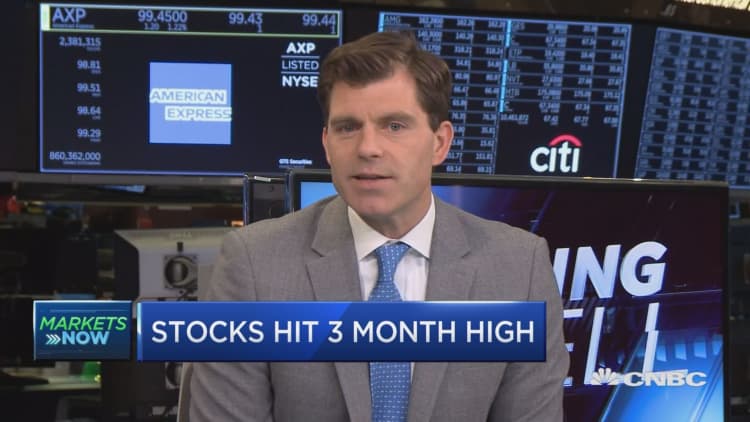June has a reputation for being the dullest of months for the stock market, but this year could be very different.
The basically goes nowhere in June, up 53 percent of the time and averaging a gain of 0.02 percent all the way back to 1945. "There isn't a swoon in June. It basically goes nowhere. It's the start of the summer doldrums," said CFRA's chief investment strategist, Sam Stovall.
But this summer is starting off with anything but doldrums when it comes to events that could shake up markets. President Donald Trump is scheduled to meet with North Korean leader Kim Jong Un on June 12, and markets could take it really well if all goes satisfactorily, or badly if those talks do not come off as at least amicable even if there's not a lot of progress from a first meeting.
Secondly, Trump has embarked on trade skirmishes on many fronts, against the closest U.S. allies and biggest trading partners. Headlines about steel and aluminum tariffs on Europe, Canada and Mexico sent stocks reeling last week and with escalation and retaliation could again.
Trade could also become a positive for the market if there is a new NAFTA deal, or if there is progress with China, the biggest U.S. trading partner with the largest deficit. But if there is no NAFTA deal soon, and it looks like the potential for an agreement is limited or nonexistent, that would be a negative. Political turmoil in both Italy and Spain have also been a source of volatility and could be again.

On another front, the Fed could generate its own market turbulence. It meets next week, and while it is expected to raise interest rates at the June meeting, it is still unclear how many more times it will hike them this year.
"What I think could cause concern is maybe we end up with economic data that is a lot stronger than anticipated and now everyone is worried about an acceleration of inflation," Stovall said. "That's just the kind of thing that could send the market for a loop. The Fed could break the 'no swoon June' mold," Stovall said.
June is the third-worst month for stocks with an on average price return of zero, and it's also been the third worst in terms of making new highs in the S&P 500, Stovall said. The Nasdaq, however, had risen above its closing high Monday, edging back toward record levels, and the small-cap Russell 2000 on Monday hit an all-time high. The S&P 500 is still 4.4 percent from its all-time high.
Even if June follows history and ends up flat, it could be highly volatile. In midterm election years, volatility in the second quarter has been 12 percent higher than normal, and in the third quarter, volatility is on average 22 percent higher.
Bob Doll, chief U.S. equity strategist at Nuveen, said in a note Monday that he sees the market trapped in a back-and-forth range, as investors work through the trade issues, the North Korean summit and rising interest rates.
"Over the near term, we expect markets to remain in their current churning phase as investors digest these broad macro risks. We believe investor confidence should regain traction in the months ahead, and expect an important inflection point could occur if and when global economic indicators bottom and start to pick back up," he wrote.
June has been the third worst month in performance, and also third in terms of setting new all-time highs in the S&P 500.
"Since 1990, the two best performing sectors in June in terms of frequency of advance are health care and telecom, not only in average price performance but in frequency of beating the market," Stovall said.
Worst-performing groups were materials and tech in terms of frequency, and in terms of price change it was consumer discretionary and materials.
Health care has been up 68 percent of the time in June, since 1990, with an average gain of 0.6 percent. Telecom has been up 61 percent of the time, with a gain of 0.3 percent.
Interestingly, the worst sector this May was telecom, down 2.3 percent, and health care was flat, with a slight decline of 0.01 percent.
Technology stocks were the outperformers in May, with a gain of 7.1 percent, followed by industrials, up 3.2 percent.
The S&P gained 2.2 percent for the month of May, ending at 2,705. The S&P 500 was up 11 to 2,746 in afternoon trading.
WATCH: Nasdaq on pace to close at record high



